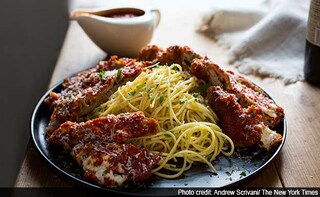It's been nearly a half-century since veal parmigiana anchored menus of the fanciest Italian restaurants in America, the kinds of places where tuxedoed waiters were as likely to burst into a Verdi aria as they were to light your cigarette.
Advertisement
Advertisement
Advertisement
Advertisement
For the latest food news, health tips and recipes, like us on Facebook or follow us on Twitter and YouTube.
Advertisement
